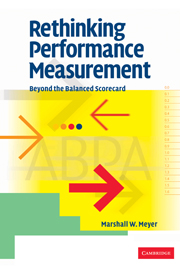6 - Managing and strategizing with ABPA
Published online by Cambridge University Press: 14 May 2010
Summary
What are the implications of ABPA for managing the firm and implementing its strategy? To answer this question, think of the following: in order to arrive at ABPA, we decomposed the firm into its elemental parts: activities, costs, customers, and revenues. ABPA connects these parts by linking the activities performed for the customer and the costs they incur with the revenues the customer supplies. This linkage allows us to assess whether particular activities or transactions (which are supersets of activities) or products (which are, in turn, supersets of transactions) are profitable. The profitability of an activity, transaction, or product can be assessed for the entire customer base of a firm or for segments of its customers. The profitability of customers is then the profitability of their products and transactions, that is, revenues less the costs of providing these products and transactions. Since people's performance can be appraised and rewarded against customer profitability targets, ABPA not only allows firms to identify which actions are profitable and which are unprofitable, but also allows firms to reward people for doing what is profitable and for improving the profitability of what they do. ABPA, though complicated, is thus a powerful tool for aligning people's behavior with the financial objectives of the firm.
We must now reassemble the firm from its elemental parts to make it manageable and to give it direction under ABPA. To do this, we must take two steps.
- Type
- Chapter
- Information
- Rethinking Performance MeasurementBeyond the Balanced Scorecard, pp. 168 - 186Publisher: Cambridge University PressPrint publication year: 2003



